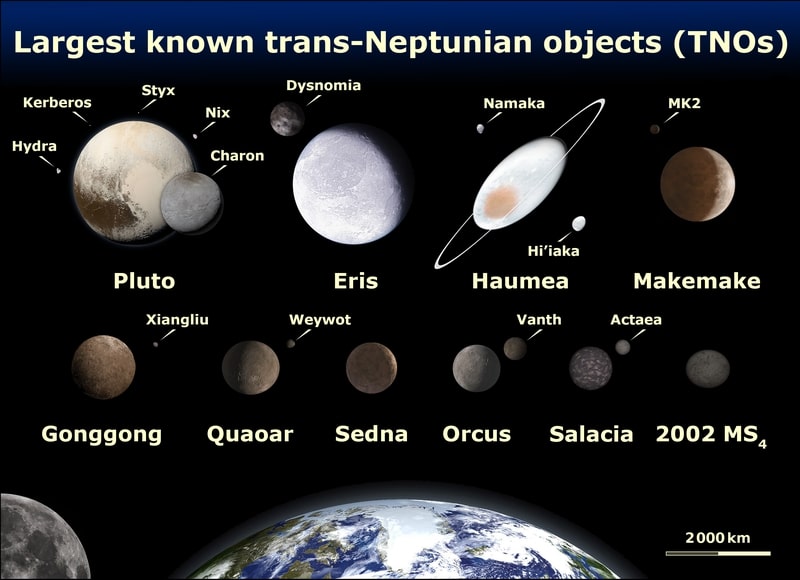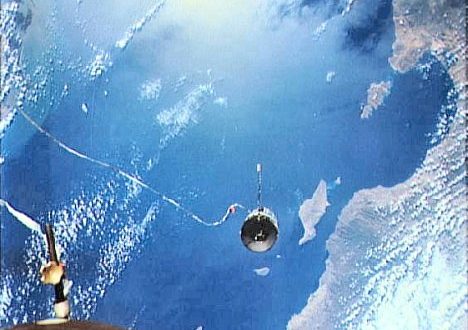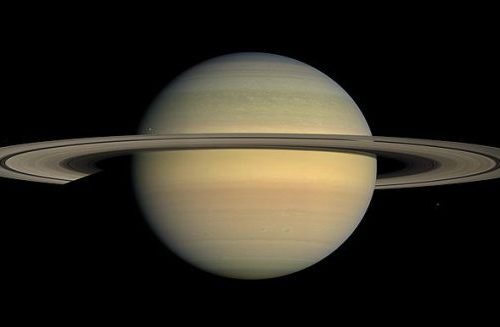Trans-Neptunian Objects: Wonders of Our Solar System’s Periphery

The exploration of our solar system’s periphery has always been a fascinating subject for astronomers. This periphery starts beyond Neptune’s orbit and is home to many objects, called trans-Neptunian objects (TNOs).
In this article, we will take a closer look at the different types of TNOs and their significance in understanding the formation and evolution of our solar system.
The Different Types of Trans-Neptunian Objects
The region, known as the trans-Neptunian region, is home to a diverse group of celestial bodies that have captured our curiosity and imagination. These are the Trans-Neptunian Objects (TNOs), which include dwarf planets, asteroids, and comets. TNOs are further divided into different categories based on their orbits.
Kuiper belt objects (KBOs)
Just beyond the orbit of Neptune at 30 astronomical units (AU) to approximately 50 AU from the Sun, are found the Kuiper belt objects (KBOs). The largest of these objects include dwarf planets Pluto, Makemake, and Haumea.
Scattered disc objects (SDOs)
Extending from the Kuiper belt in a circumstellar disc to well beyond 100 AU are the Scattered disc objects (SDOs). These objects scatter farther above and below the ecliptic than the Kuiper belt proper. This area is believed to be the origin of most periodic comets in the solar system. It is also home to the most massive dwarf planet Eris.
Extreme trans-Neptunian objects (ETNOs)
Some TNOs have highly eccentric orbits that take them between the Kuiper belt, the Scattered disk, and even the Oort cloud. These objects can have aphelions or as much as several thousands of AUs. The most famous object in this group is dwarf planet Sedna.
Oort cloud objects (OCOs)
The furthest category of TNOs are the Oort cloud objects (OCOs) ranging from 2000 to 200,000 AU (0.03 to 3.2 light-years).
Understanding Their Role in Our Solar System’s Evolutionary Processes
Trans-Neptunian Objects (TNOs) have always remained a mystery for astronomers. These small icy bodies beyond the orbit of Neptune have been intriguing scientists for decades. Their discovery has revolutionized the way we look at our solar system and its evolution.
TNOs hold significant importance in understanding the early formation of our solar system. The study of these objects can provide valuable insights into the conditions that existed during the formation of the solar system.
TNOs serve as time capsules that can reveal information about the early solar system. They contain pristine material that has been preserved for billions of years, giving us a glimpse into the past.
The study of TNOs can also help us understand the processes that led to the formation of the outer planets. By analyzing their orbits, scientists can make predictions about the formation and migration of these planets.
Therefore, the study of TNOs is crucial for understanding the evolution of our solar system. It is through the exploration of these fascinating bodies that we can unlock the secrets of our cosmic past.
How We Can Learn More About These Fascinating Bodies
The study of trans-Neptunian objects (TNOs) continues to be an exciting field of research. With new advancements in technology, scientists can now gather more information about these distant bodies.
One way to learn more about TNOs is through ground-based observations using telescopes. By studying the reflected light from these objects, scientists can determine their composition and surface features.
Another method is through space missions, such as NASA’s New Horizons spacecraft, which visited Pluto and its moons in 2015 and is now on its way to study another TNO.
By analyzing the data gathered from these missions, scientists can better understand the characteristics and behavior of TNOs.
Additionally, computer simulations can be used to model the formation and evolution of TNOs. By comparing these simulations to observations, scientists can refine their understanding of the processes that led to the formation of these fascinating bodies.
As technology continues to advance, we can expect to uncover more information about TNOs and gain a better understanding of our solar system’s evolution.
Conclusion
Trans-Neptunian objects hold a wealth of exciting possibilities for further exploration and study. As we have seen, these distant bodies have played a crucial role in the formation and evolution of our solar system.
Through continued research and observation, we can unlock even more of the wonders of these fascinating objects. With the help of advanced technology and space missions, we can gather more data and insights into their composition, behavior, and potential for supporting life.
As we push the boundaries of our knowledge and understanding of these objects, we may even discover new frontiers in space exploration and travel. The study of trans-Neptunian objects is a testament to the human spirit of curiosity and discovery, and it reminds us of the vastness and complexity of the universe we inhabit. We look forward to what future discoveries and insights the study of trans-Neptunian objects will bring.
Would you like to receive similar articles by email?





